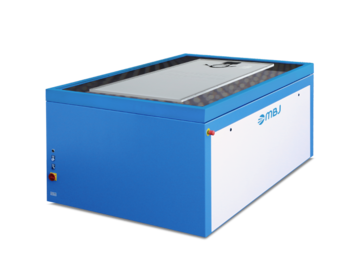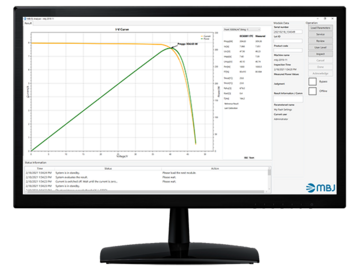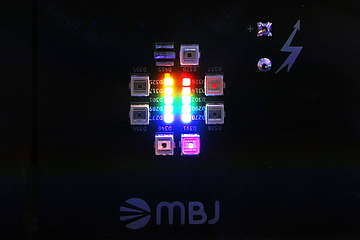


In July 2020, the laboratory version of the MBJ LED solar sun simulator was put into operation in the solar laboratory of Prof. Dr. Andreas Schneider at the Westphalian University in the Department of Electrical Engineering and Applied Sciences.
After a short training phase of the corresponding staff and university lecturers, the flasher is available for research tasks as well as for teaching. In terms of both, software and hardware, the LED sun simulator is convincing all along the line. The software environment convinces by high stability and reliability and allows an almost intuitive operation after a very short training period. This kind of requirement is an important criterion, especially for use in teaching, for example in student practical experiments.
After calibration, the sun simulator convinces with an extremely stable light spectrum, which makes a new calibration almost unnecessary, even after restarting the system for many days and weeks. Since the sun simulator is not used on a daily basis at the Westphalian University, but rather on a project- and teaching-related basis, the calibration that is regularly carried out after a restart always shows that there are only minimal, almost non-measurable differences.
In a larger study within a bachelor thesis, the flasher was used to determine the degradation of solar modules, which have been in operation at the university in different installations for 11-20 years. The measurement of crystalline, thin-film and heterojunction modules proved to be problem-free, even for students who were relatively inexperienced with the MBJ Solutions measurement system after only a short training phase. Finally, the work could be evaluated with the highest grade.
The housing dimension of the flasher is designed to be very space-saving due to the innovative LED lighting and requires hardly any more surface area than the solar modules to be measured. This is very much in line with the already limited space available in laboratory areas at German universities of applied sciences. A vertical or horizontal flasher housing of more than 4m, as it was necessary with the xenon lamp based flashers, would have been an exclusion criterion here.
In conclusion, the MBJ LED solar sun simulator can be attested a very high quality in the technical implementation and also a very high light stability. The simple and robust design is ideally suited for work in research and teaching even with often changing operating personnel.
We would like to thank Prof. Dr. Andreas Schneider and his students for this thoroughly positive experience report on our system and wish them continued success in research and teaching.
